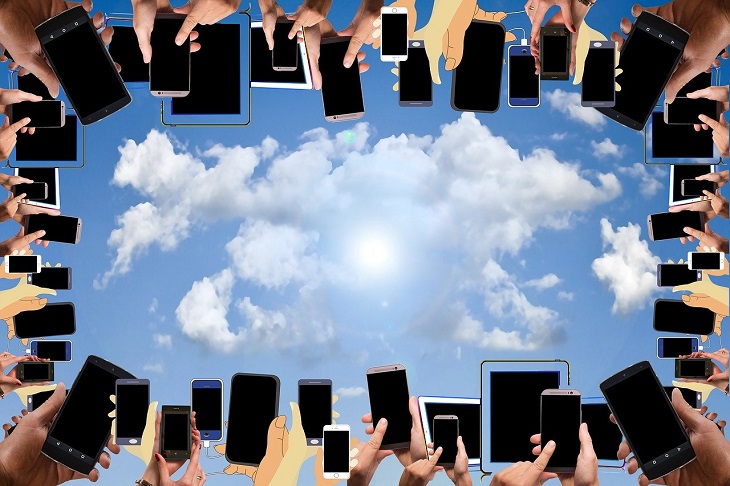Communication around the world has been a tale of change, a change that has never stopped unfolding. Since the days of using messengers, drums, and smoke signals, then came landlines, and now mobile phones, the world of communication continues to amaze each passing day.
The first telephone network arrived in Kenya in 1908 and had only 18 customers in Mombasa and Nairobi. This was during the colonial period when the use of the telephone was the preserve of the white settlers. It was not until the 1960s that those red telephone booths were installed in major towns in Kenya.
Then things changed, and something called “wireless communication” hit the world through a mobile phone. There is no doubt that mobile phones, in particular smartphones, have become our inseparable companions. However, you might not know that the history of mobile phones goes back to 1908 when a U.S. Patent was issued in Kentucky for a wireless telephone.
Mobile phones were invented as early as the 1940s when engineers working at AT&T developed cells for mobile phone base stations. In 1973, Motorola became the first company to mass-produce the handheld mobile phone. These early phones were called 0G mobile phones or Zero-Generation mobile phones. Most phones today rely on 3G or 4G mobile technology.
These early models were large, heavy, and expensive, primarily serving as status symbols for business professionals. They offered limited functionality, with voice communication as the primary feature. Battery life was short, and the devices required frequent recharging.
Related Content: Samsung Is Cooking Something Flippy For The Kenyan Market
The 1990s saw significant advancements in mobile phone technology. Phones became more compact and affordable, making them accessible to a broader audience. The introduction of GSM (Global System for Mobile Communications) standards in 1991 facilitated international roaming and better call quality. Iconic models like the Nokia 3310, released in 2000, became known for their durability and long battery life. Features such as text messaging (SMS) became hugely popular during this era.
Many Kenyans will relate to this era when someone who owned a mobile phone was more popular than the area Assistant Chief. Most of those who owned phones in Kenyan rural areas were teachers, who would walk with them tagged in their waists and often displayed them like they owned the whole world.
Then came the smartphones. The early 2000s marked the beginning of the smartphone era around the world. Devices like the BlackBerry, which featured a full QWERTY keyboard and advanced email capabilities, gained popularity among business users. However, the launch of the Apple iPhone in 2007 revolutionized the industry. The iPhone introduced a touch-sensitive screen, a sleek design, and an intuitive user interface. It combined a phone, an iPod, and an internet communication device into one, setting the standard for future smartphones.
The entry of Samsung Electronics in the smartphone world shifted the smartphone world. For years, Samsung has quietly plugged away at smartphones, dabbling with Palm and Windows Phone and its Java-based quasi-smartphone O.S. before finding its feet with its first round of Galaxy S phones. The Galaxy S II led Samsung to break out in the U.S. Once the Galaxy S III became the “anti-iPhone,” available by the same name on every carrier.
Smartphones became ubiquitous during the 2010s, and their capabilities expanded dramatically. High-resolution cameras, advanced sensors, and powerful processors transformed phones into essential photography, navigation, and entertainment tools. Mobile phone design also evolved, with trends favoring larger screens, thinner bodies, and minimal bezels. Innovations such as fingerprint sensors, facial recognition, and augmented reality (A.R.) started to emerge. When you look at Samsung’s latest devices, such as the Samsung Galaxy S24, you will know where the magic lies.
For instance, Samsung unveiled the Galaxy S24 Ultra, Galaxy S24+, and Galaxy S24 into the Kenyan market in January 2024, unleashing new mobile experiences with Galaxy A.I. and leading the way into a new era that will forever change how mobile devices empower users. Launch of S24 took advantage of Artificial intelligence (A.I.), from enabling barrier-free communication with intelligent text and call translations to maximize creative freedom with Galaxy’s ProVisual Engine to setting a new standard for search that will change how Galaxy users discover the world around them.
As we move further into the 2020s, several trends are shaping the future of mobile phones:
5G Connectivity
The rollout of 5G networks continues to revolutionize mobile communication with faster speeds, lower latency, and greater capacity. 5G will enable new applications in areas such as virtual reality (V.R.), augmented reality (A.R.), and the Internet of Things (IoT). Samsung became among the first to roll out 5G devices, and they have since cemented their presence around the world.
Foldable and Flexible Displays
Foldable phones, like the Samsung Galaxy Fold, are already on the market, offering larger screens in more compact forms. As technology improves, we can expect more durable and versatile flexible displays. In fact, Samsung will be rolling out its second flagship phone that will be both affordable and accessible.
Artificial Intelligence (A.I.) Integration
A.I. is increasingly integrated into smartphones, enhancing everything from camera functionality to personalized user experiences. The beginning is just AI-powered virtual assistants, predictive text, and advanced photo editing. The world is currently at the start of the most exciting and historic moments in technology. The era of mobile A.I. is here—for Samsung, it opened up with the introduction of Galaxy A.I. features on the Galaxy S24 series, our first A.I. phone.
Sustainability
Sustainability is becoming a critical concern. Companies are focusing on reducing electronic waste by designing phones with modular, easily repaired, or upgraded components. Materials are being sourced more responsibly, and there is a push toward recycling and reusing parts.
Enhanced Security Features
Biometric security features will continue to evolve, providing more secure and convenient ways to protect personal data. This includes advancements in facial recognition, fingerprint scanning, and even emerging technologies like vein pattern recognition.
Health and Wellness Integration
Future phones may offer more advanced health monitoring features, including sensors capable of tracking vital signs, stress levels, and other health metrics, integrating seamlessly with healthcare providers for better personal health management.
As technology advances, mobile phones can expect to become even more integral to our daily lives, adapting to our ever-changing needs and addressing global challenges such as sustainability.
Related Content: Pioneering Mobile Innovation In East Africa













